Some of the hottest peppers have origins in the Caribbean. While the Bahamian goat pepper is not among the spiciest, is is one of my personal favorites from the West Indies.
With a name like ‘goat pepper,’ you will likely have some questions about the variety. In this article, I’ll share everything I know about the Bahamian goat pepper, including flavor, appearance, origin, and growth habits.
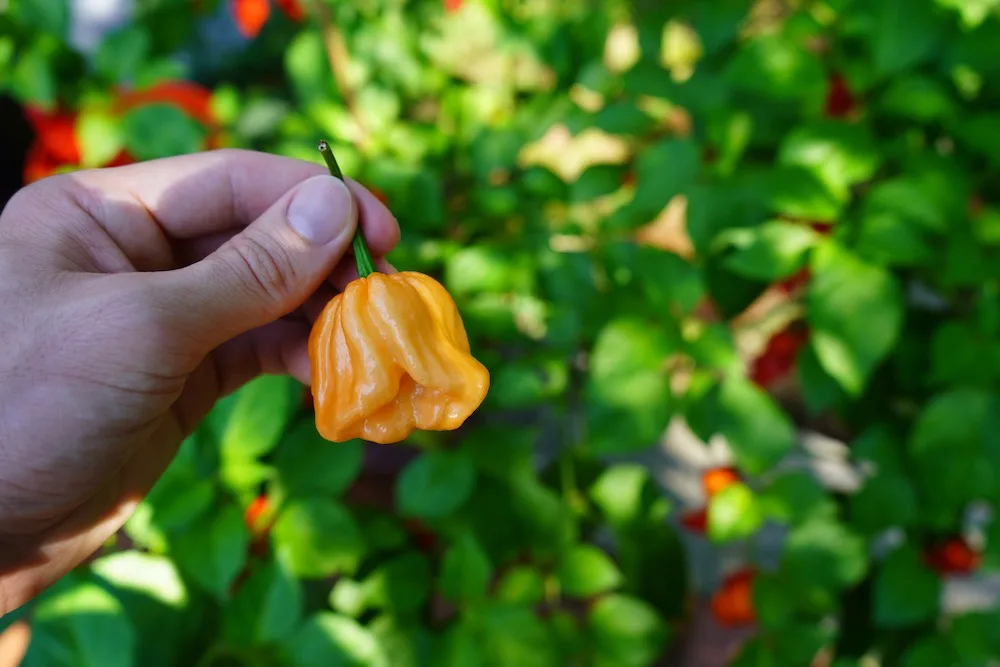
Name and Origin
As we’ve established, the goat pepper comes from the Bahamas and is from the Capsicum chinense species. It is similar to the scotch bonnet in terms of flavor, but has a much stranger appearance, some say like a pumpkin.
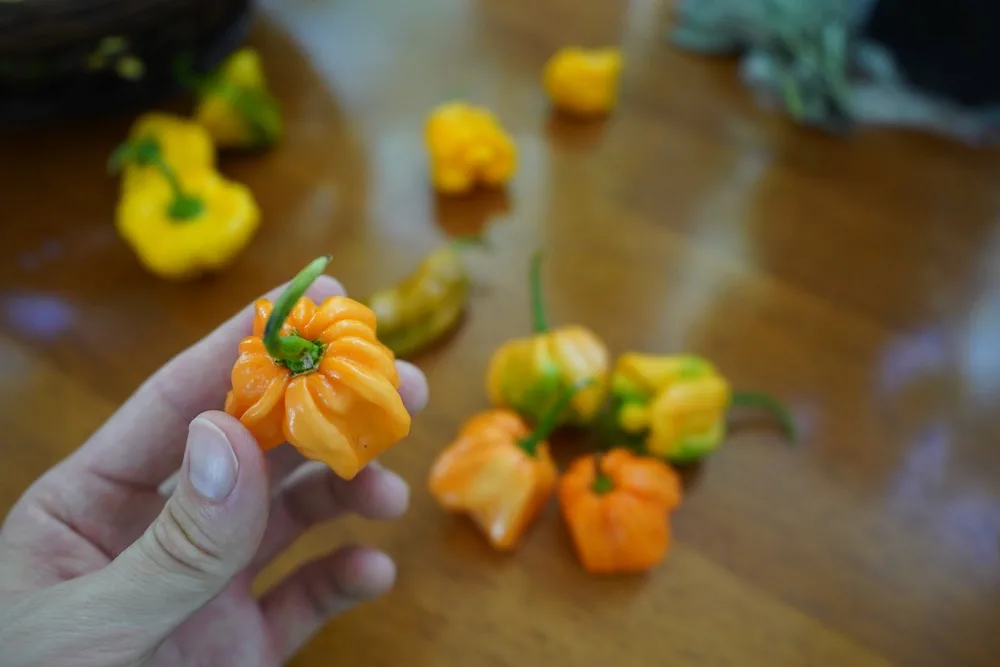
Where does the name come from? The origin of the goat pepper’s name is uncertain, but there are a few common theories. One is that the pepper has a spicy ‘kick’ similar to an angry goat’s powerful kick. Another is that the pepper is ugly, like a goat.
Another possible reason is that goats and other livestock are commonly raised in the Bahamas. The peppers are therefore commonly found growing nearby actual goats. And finally, when cut open, goat peppers release a powerful aroma that some say smells like a goat (though is disagree).
Fun read: Read Patrick Holian’s story about his visit to the Bahamas and his quest to find out why the goat pepper is so named.
Goat Pepper Scoville (Heat)
The goat pepper has a powerful heat, but it certainly is not among the hottest I have tasted. This makes the Bahamian goat pepper a great candidate for making usable hot sauce.
The Bahamian Goat pepper has a Scoville rating between 100,000-300,000 SHUs. This heat level is in line with a common habanero pepper that you might buy at a grocery store.
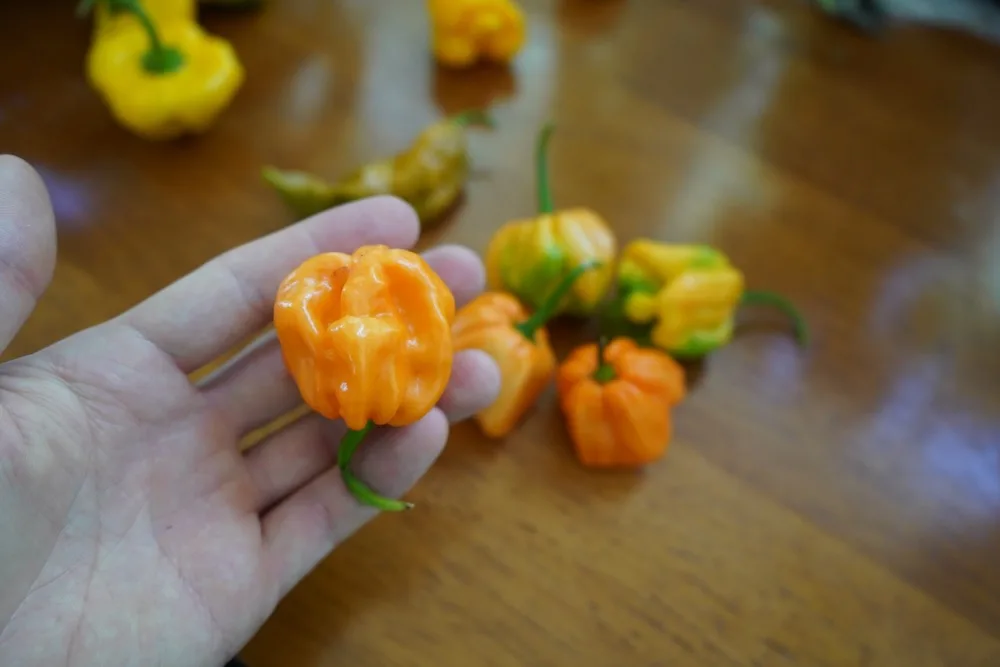
While heat is similar to habaneros, the flavor is commonly regarded as much better, and I couldn’t agree more!
Bahamian Goat Pepper Flavor and Recipes
One of the standout attributes of the goat pepper is its wonderful flavor and aroma. Just slicing one in half releases a potpourri of lemon, flowers, and pepper into the air.
If you’re brave enough to take a bite of one raw, the flavor is fruity and citrusy, with obvious notes of lemon. The amount you eat is directly correlated to how hot it will be, so start with a small nibble.
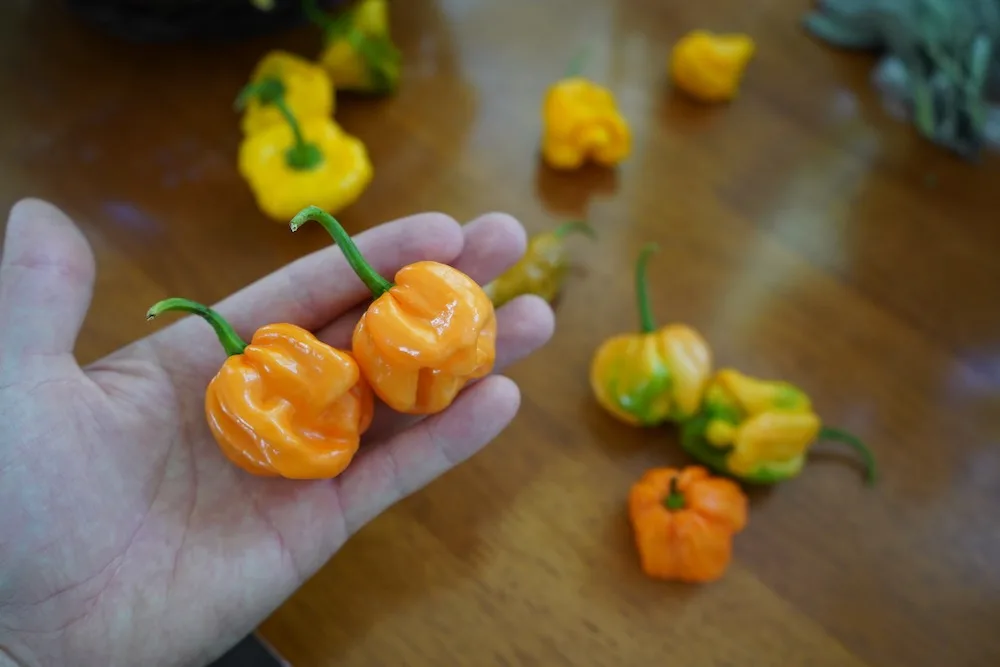
Even better, use the goat pepper to enhance the flavor and experience of an authentic Bahamian dish. Goat peppers are commonly used to make spicy conch salad, fried chicken, and more.
Bahamian Goat Pepper Seeds and Growing
If you want to get your hands on some Bahamian goat peppers, chances are you’ll have to grow them. Unless you live in the Caribbean, these peppers are hard to find fresh.
Thankfully, seeds are easy to find online, and growing them is no different than growing habaneros.
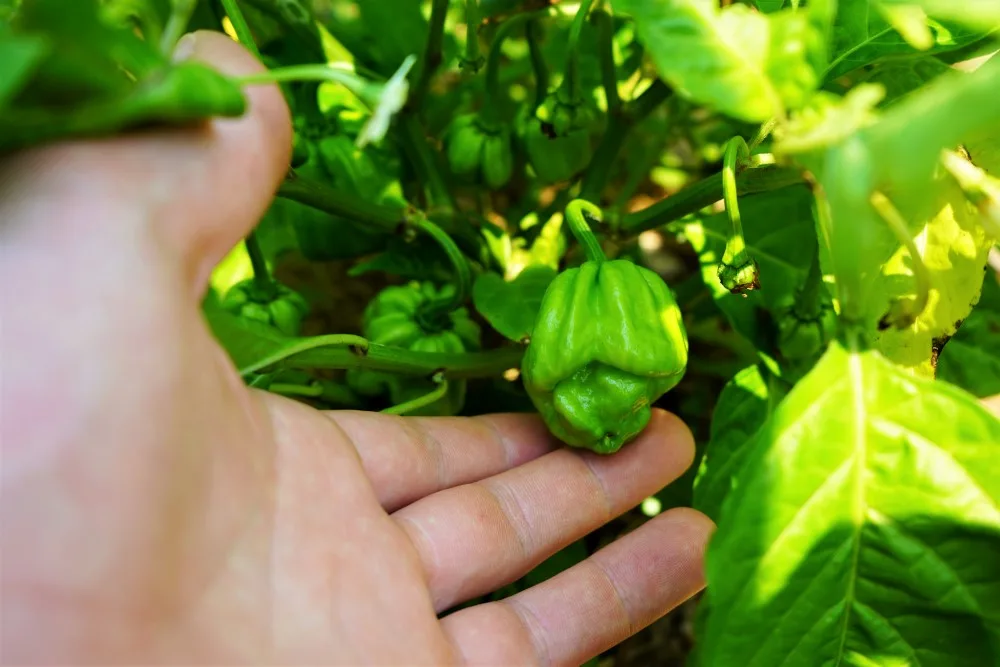
The plants are fairly vigorous, and tend to produce dense collections of peppers. Here in New England, we did struggle with some fungal issues on the peppers. This may have been due to the plant’s tendency to grow tight bunches of leaves, leading to poor airflow.
Otherwise, the plant is productive and easy to grow. As with many chinense species peppers, the Bahamian goat pepper takes a long time to ripen, so be sure to plant early indoors!
Read Next:
I hope this article has inspired you to try the amazing Bahamian goat pepper yourself. It is a beautifully quirky and delicious pepper that is the perfect substitute for habaneros in your garden.


Solly
Monday 12th of February 2024
the goat pepper has a distinct aroma similar to the odor that the male goat secrets.
chickie go
Friday 5th of August 2022
hi!..how can you tell the difference, in appearance, between a bahamian goat and freeport scotch bonnet?...they look the same...color is the same...i can't tell the difference placing them side by side....